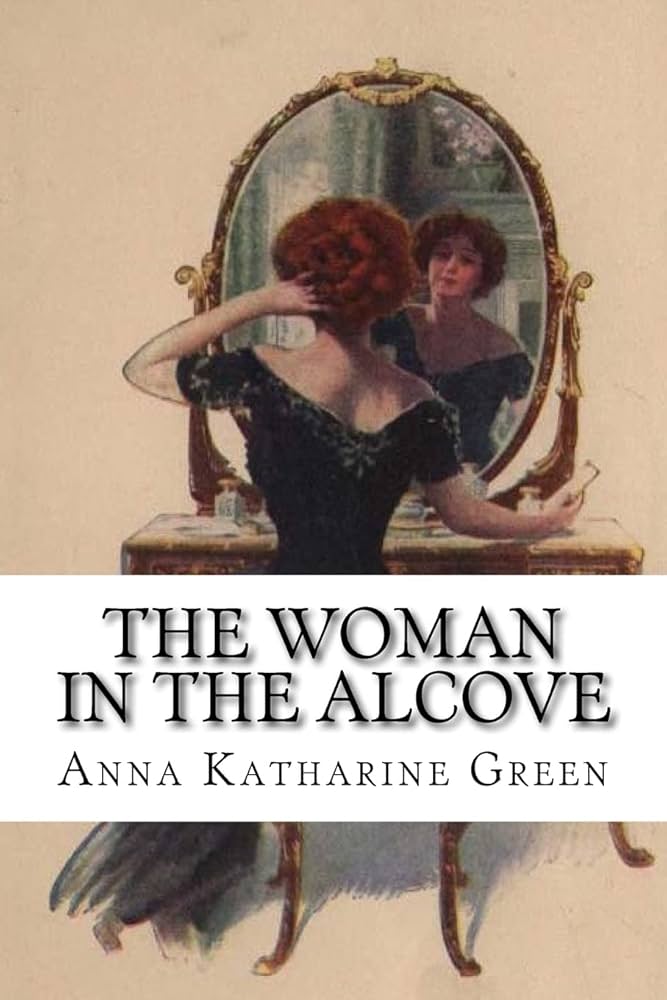Chapter XII — The woman in the Alcove
byChapter XII — The woman in the Alcove opens with Alice Ayers stepping into a home cloaked in gentleness, but charged with tension beneath its surface. She arrives under the pretense of caregiving, accepted graciously by Mr. Grey and his fragile daughter, whose illness has dulled the atmosphere of the house to something hushed and solemn. Though suspicion drew her there, the warmth extended by her hosts complicates her purpose, stirring doubts she hadn’t expected. Her goal is clear—secure evidence that could clear Anson Durand—but the humanity she encounters creates an unsettling contrast. Mr. Grey’s plea to shield his daughter from any harsh truths about the murder adds another layer of restraint. Alice, committed to protecting the girl’s peace, finds her own motives entangled in that same effort, walking a fine line between betrayal and compassion.
Yet Alice cannot abandon her reason for being there. Her loyalty to Durand and belief in his innocence refuse to fade beneath soft words and quiet kindness. She plans to test Mr. Grey using the stiletto—a calculated move to provoke recognition or guilt. But each moment she spends in the home builds hesitation, especially when she sees Mr. Grey’s attention fixed solely on his daughter’s comfort. That care seems genuine, not performed. Still, it is not enough to dismiss what she believes he may have done. Her mind returns often to the scene in the alcove, to the bloodied weapon and the weight it now carries in her pocket. It is both her burden and her key. Her silent war between duty and decency intensifies with every passing hour.
As the days stretch on, Alice begins to note subtleties in Mr. Grey’s behavior—his moments of distraction, the shadows that pass over his expression during lulls in conversation. Are they signs of guilt, or simply fatigue from weeks of worry? These observations, once objective, now come tinted with compassion, as though her proximity is softening the edges of her certainty. Meanwhile, his daughter’s condition pulls Alice further into emotional investment. Each touch of her hand, each glance of gratitude, fractures Alice’s resolve a bit more. Her role as nurse grows real. And in that role, deception stings sharper than suspicion ever did. She feels torn, not just between truth and kindness, but between two futures—one for Durand, and one that does not betray these fragile people in their hour of need.
When Mr. Grey leaves the room briefly, Alice nearly acts. She fingers the stiletto hidden in her apron, her heart pounding with the weight of her decision. The sound of footsteps halts her, and her chance dissolves into shadow. This dance of opportunity and hesitation becomes the rhythm of her days. She begins to question whether her plan is justice or vengeance in disguise. The line between noble cause and personal obsession grows thin, and Alice is too close to the edge to tell which side she stands on. Her dilemma isn’t just one of guilt or innocence, but of identity—what kind of person she wants to be at the end of this.
In the silence that falls over the house each evening, Alice contemplates whether her presence helps or harms. Her conscience whispers louder than ever, questioning whether truth discovered through manipulation can be considered truth at all. She starts to ask herself what justice really demands—an answer, a name, a punishment—or mercy for those who’ve suffered long before the murder ever took place. As the stiletto remains untouched, buried at the bottom of her bag, so too does her certainty, lost somewhere between her love for Durand and the kindness she’s received from strangers. This chapter doesn’t offer resolution but deepens the emotional terrain, laying bare the consequences of carrying both secrets and responsibility. In that home by the window, among whispered conversations and dimmed lights, Alice stands at the heart of a storm she no longer fully controls.


